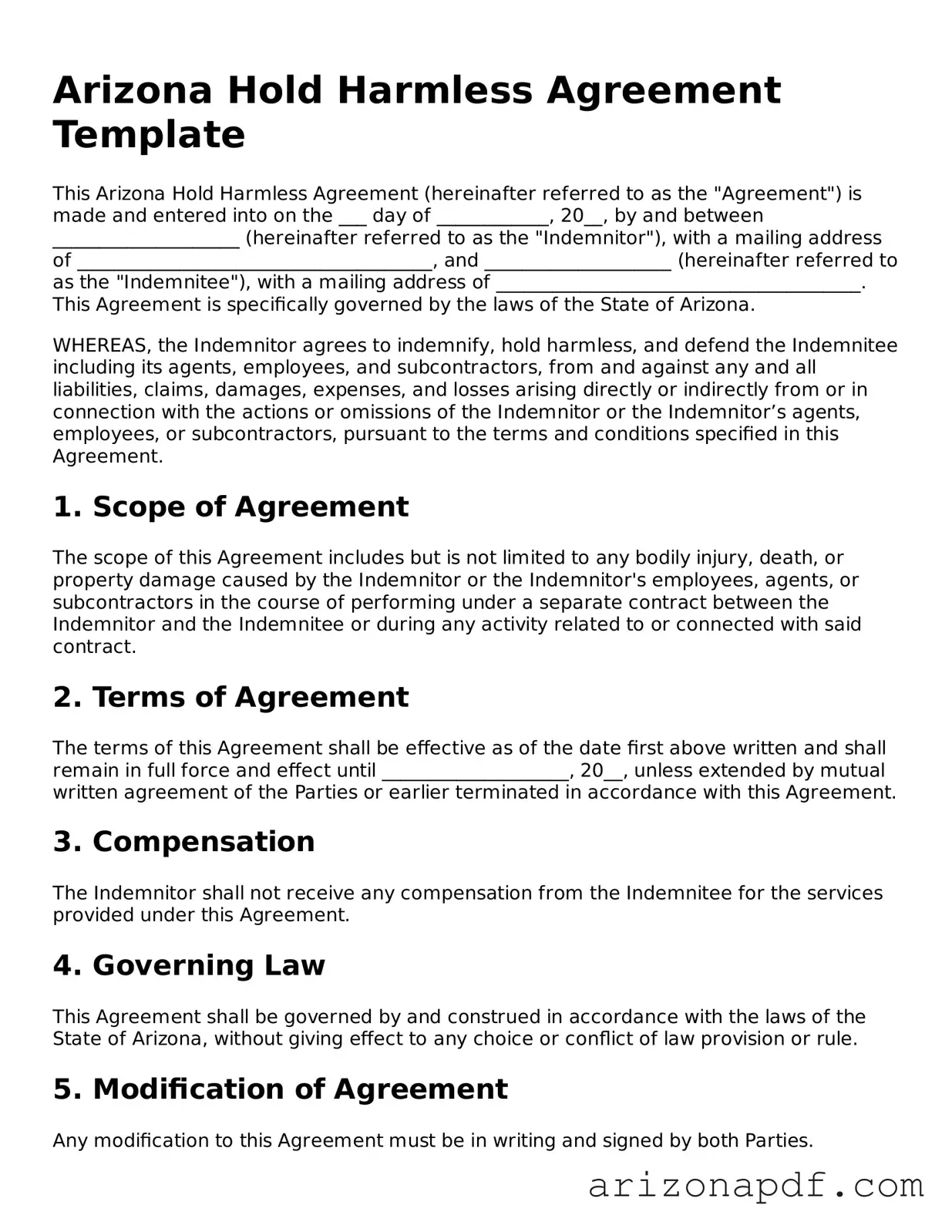Arizona Hold Harmless Agreement Template
This Arizona Hold Harmless Agreement (hereinafter referred to as the "Agreement") is made and entered into on the ___ day of ____________, 20__, by and between ____________________ (hereinafter referred to as the "Indemnitor"), with a mailing address of ______________________________________, and ____________________ (hereinafter referred to as the "Indemnitee"), with a mailing address of _______________________________________. This Agreement is specifically governed by the laws of the State of Arizona.
WHEREAS, the Indemnitor agrees to indemnify, hold harmless, and defend the Indemnitee including its agents, employees, and subcontractors, from and against any and all liabilities, claims, damages, expenses, and losses arising directly or indirectly from or in connection with the actions or omissions of the Indemnitor or the Indemnitor’s agents, employees, or subcontractors, pursuant to the terms and conditions specified in this Agreement.
1. Scope of Agreement
The scope of this Agreement includes but is not limited to any bodily injury, death, or property damage caused by the Indemnitor or the Indemnitor's employees, agents, or subcontractors in the course of performing under a separate contract between the Indemnitor and the Indemnitee or during any activity related to or connected with said contract.
2. Terms of Agreement
The terms of this Agreement shall be effective as of the date first above written and shall remain in full force and effect until ____________________, 20__, unless extended by mutual written agreement of the Parties or earlier terminated in accordance with this Agreement.
3. Compensation
The Indemnitor shall not receive any compensation from the Indemnitee for the services provided under this Agreement.
4. Governing Law
This Agreement shall be governed by and construed in accordance with the laws of the State of Arizona, without giving effect to any choice or conflict of law provision or rule.
5. Modification of Agreement
Any modification to this Agreement must be in writing and signed by both Parties.
6. Entire Agreement
This Agreement constitutes the entire agreement between the Parties with respect to the subject matter hereof and supersedes all prior agreements, understandings, negotiations and discussions, whether oral or written, of the Parties.
7. Severability
If any term or provision of this Agreement is found by a court of competent jurisdiction to be invalid, illegal, or unenforceable, the remaining provisions will remain in full force and effect.
8. Acknowledgement
BY SIGNING BELOW, both the Indemnitor and the Indemnitee acknowledge that they have read and understand this Agreement, and they agree to be bound by its terms and conditions.
IN WITNESS WHEREOF, the Parties have executed this Agreement as of the date first above written.
INDMNITOR:
Signature: ___________________________
Print Name: __________________________
Date: _______________________________
INDEMNITEE:
Signature: ___________________________
Print Name: __________________________
Date: _______________________________
